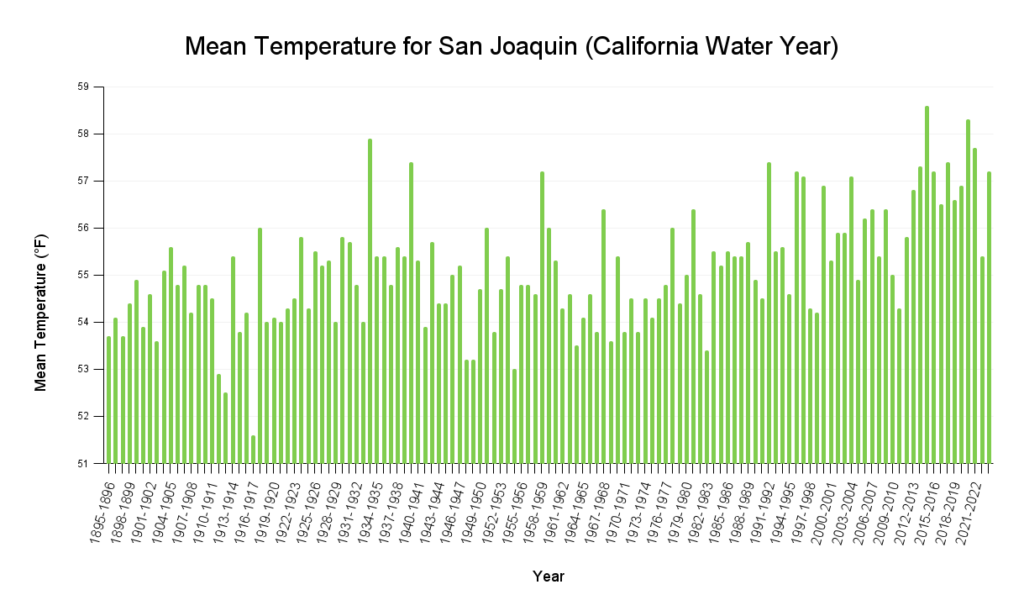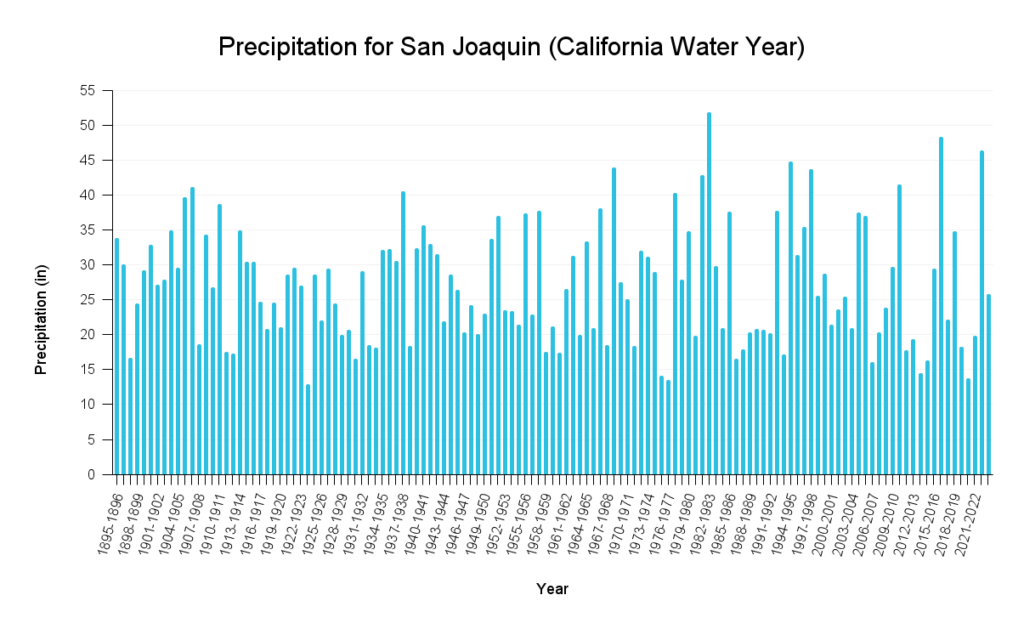Climate change is making water management much harder for farmers in places like San Joaquin County.

Rising temperatures are causing more water to evaporate from the soil and to transpire from plants themselves. As a result, crops need more water than they would in cooler temperatures.
With more water vapor in the atmosphere, rainfall is also becoming less predictable—sometimes there’s too much, leading to flooding, and other times there’s barely any, causing droughts. This makes it really difficult for farmers to plan how to water their crops effectively. In fact, one bad flood or drought could ruin an entire season’s crops.

These challenges force farmers to rely heavily on groundwater to keep their crops alive. But this increased demand is draining the region’s groundwater supplies faster than they can be refilled. Without better water management strategies, places like San Joaquin County could face even more severe water shortages in the future, threatening their ability to produce food.
THINK-PAIR-SHARE
Think about the water cycle.
How does increased evaporation from rising temperatures contribute to more unpredictable rainfall patterns?
Why might more water vapor in the atmosphere lead to both extreme droughts and heavy rainfall?